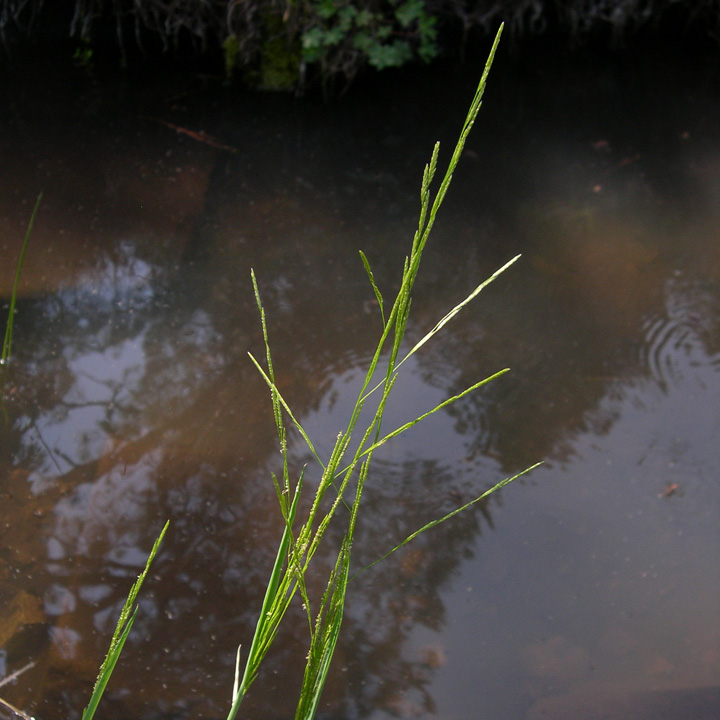Glyceria
|
Family: Poaceae |
Plants usually perennial, rarely annual; rhizomatous. Culms (10)20-250 cm, erect or decumbent, freely rooting at the lower nodes, not cormous based. Sheaths closed for at least 3/4 their length, often almost entirely closed; ligules scarious, erose to lacerate; blades flat or folded. Inflorescences terminal, usually panicles, sometimes racemes in depauperate specimens, branches appressed to divergent or reflexed. Spikelets cylindrical and terete or oval and laterally compressed, with 2-16 florets, terminal floret in each spikelet sterile, reduced; disarticulation above the glumes, below the florets. Glumes much smaller than to equaling the adjacent lemmas, 1-veined, obtuse or acute, often erose; lower glumes 0.3-4.5 mm; upper glumes 0.6-7 mm; calluses glabrous; lemmas membranous to thinly coriaceous, rounded over the back, smooth or scabrous, glabrous or hairy, hairs to about 0.1 mm, 5-11-veined, veins usually evident, often prominent and ridged, not or scarcely converging distally, apical margins hyaline, sometimes with a purplish band below the hyaline portion, apices acute to rounded or truncate, entire, erose, or irregularly lobed, unawned; paleas from shorter than to longer than the lemmas, keeled, keels sometimes winged; lodicules thick, sometimes connate, not winged; anthers (1)2-3; ovaries glabrous; styles 2-branched, branches divergent to recurved, plumose distally. x = 10. Name from the Greek glukeros, 'sweet', the caryopses of the type species being sweet. Spikelets 3-fld, ovate to oblong or cylindric, subterete or moderately flattened, disarticulating above the glumes and between the lemmas; glumes unequal, shorter than the lemmas, 1-veined, often scarious at the margins and tip; lemmas awnless, lance-ovate to elliptic or obovate, usually obtuse, rounded on the back, usually scarious at the tip, the (5)7(9) veins parallel, often raised; paleas elliptic to obovate, becoming indurate; stigmas elevated on naked slender styles; perennials of marshes, shallow water, or wet ground, erect or decumbent at base and often rooting from the lower nodes, with flat or folded blades, closed sheaths, and freely branched, often ample panicles; x=10. (Panicularia) 35, mainly N. Temp. For G. pallida, see Puccinellia pallida. Gleason, Henry A. & Cronquist, Arthur J. 1991. Manual of vascular plants of northeastern United States and adjacent Canada. lxxv + 910 pp. ©The New York Botanical Garden. All rights reserved. Used by permission. |

